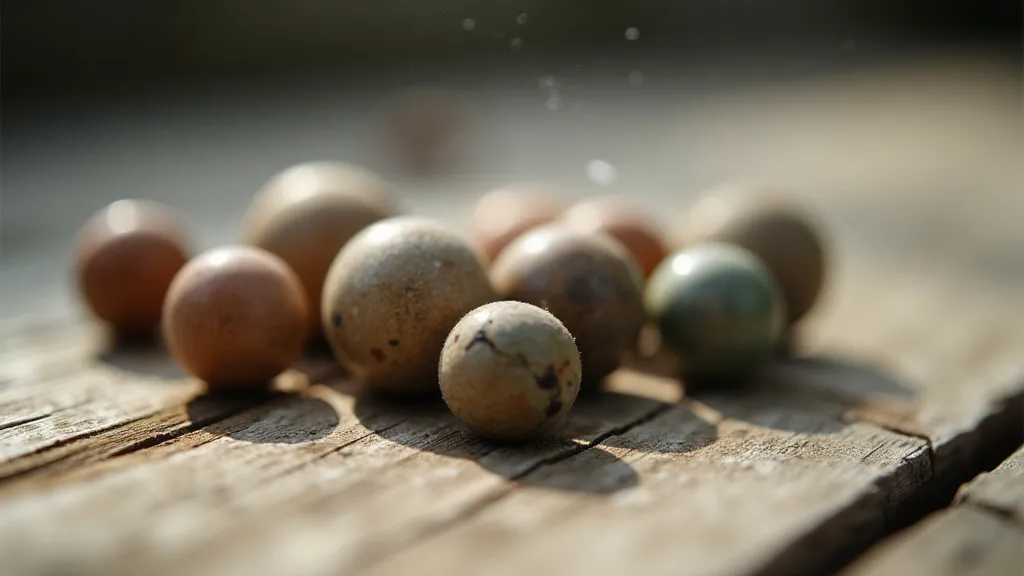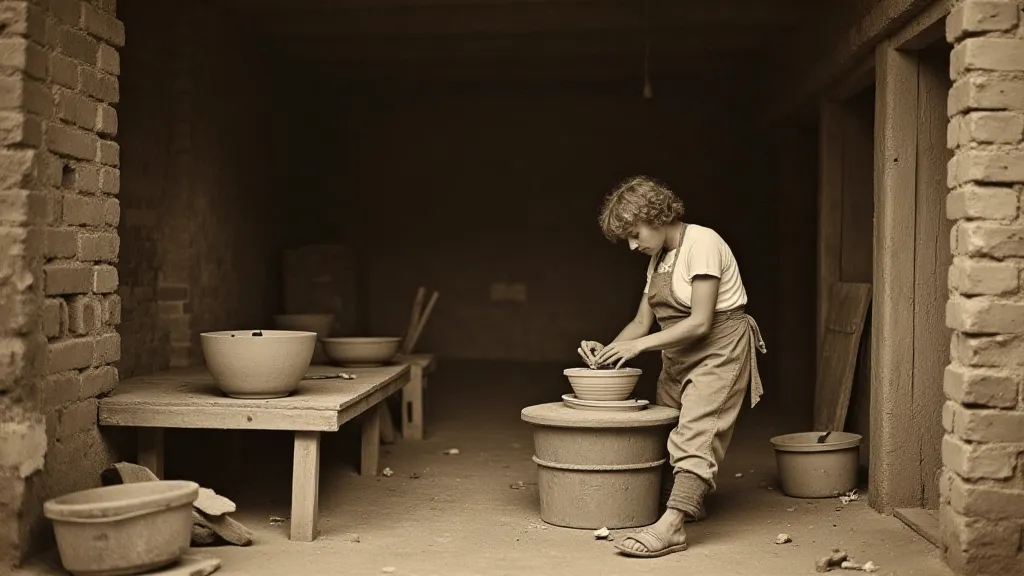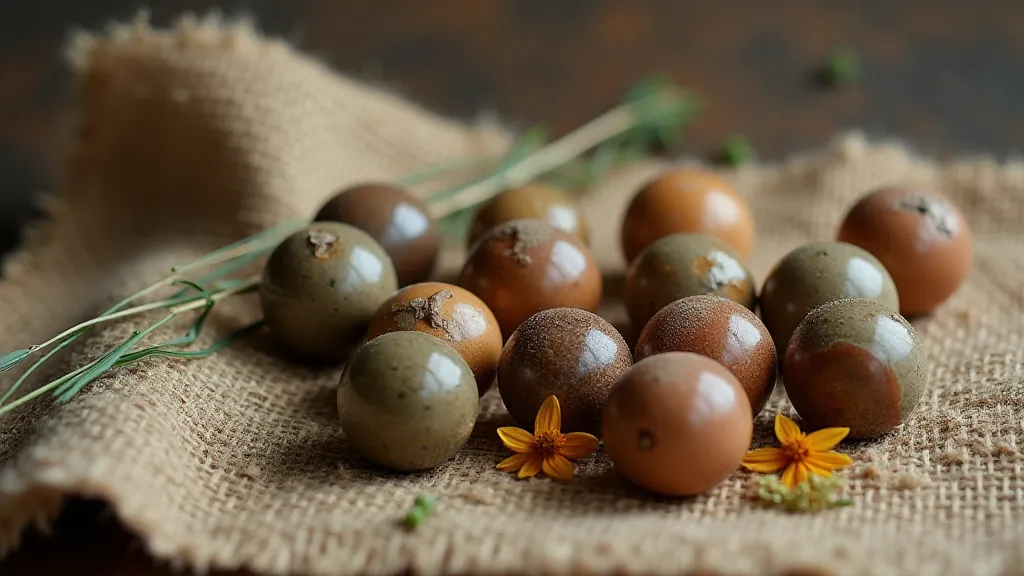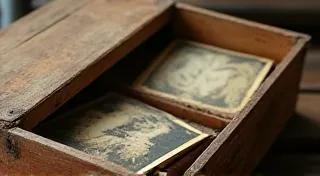Vestiges of Innocence: Unearthing the Stories Held Within Clay Marbles
The world of antique marble collecting is often dominated by dazzling swirls of glass – the vibrant cats-eyes, the glowing rainbows of Dros, the intricate patterns of commies. But tucked away, often overlooked and underestimated, lies a treasure of a different kind: clay marbles. These humble spheres, typically in muted tones of brown, grey, ochre, and occasionally red or blue, carry a unique charm, a poignant connection to a simpler time, and a history intertwined with childhood memories for countless individuals. They represent a vestige of innocence, a tangible link to a generation of children who found joy in the simplest of things.

A Childhood Echo: Remembering the Feel of Clay
For many, the first memories of marbles aren’t of glittering glass, but of cool, grainy clay. Before mass-produced, brightly colored glass marbles became commonplace, clay marbles were the default playground currency. They were easily accessible, inexpensive, and perfect for a child's small hands. The distinctive feel – the slight grit, the weightiness, the feeling of the earth itself held within your palm – is a deeply ingrained sensory detail in the memories of those who grew up in the early to mid-20th century. Imagine the feel against your fingers as you pulled a handful from a dusty pocket, the satisfying *thunk* as you fired a shot at the circle. These aren't just objects; they're portals to a specific era of childhood.
My own grandfather, a stoic man rarely given to sentimentality, would occasionally reminisce about his own childhood in rural Ohio. He’s tell me about trading clay marbles for fireflies, or for the privilege of being the 'shooter' in a particularly competitive game. He’s describe the thrill of acquiring a larger-than-average clay marble, a status symbol among the neighborhood boys. These seemingly insignificant spheres became instruments of social interaction, of skill development, of shared joy. The stories they hold are a rich tapestry of a bygone era. It's fascinating how a simple game could hold so much significance, shaping childhood experiences and creating lasting memories – a subject explored in more detail when considering the larger world of antique collectibles and the collector's paradox: balancing passion and preservation.
The Craft: From Earth to Plaything
The manufacturing process of clay marbles was remarkably straightforward, reflecting the resources and ingenuity of the time. Typically, local clay would be dug from riverbeds or fields – a readily available and free material. This clay would then be mixed with water and worked to remove air bubbles and create a smooth consistency. The mixture was formed into small balls, often by hand, though simple molds were sometimes employed for increased efficiency. These nascent marbles were then carefully dried, often in the sun, a slow and critical step to prevent cracking.
The final, and most important stage, was firing. Marbles were placed in a kiln, a primitive oven constructed from brick or clay, and heated to a high temperature. This firing process permanently hardened the clay, transforming the fragile ball into a durable plaything. The firing process contributed to the subtle variations in color and texture that characterize antique clay marbles – evidence of the kiln’s uneven heat and the individual potter’s skill. Variations in firing temperatures also created distinct shades of red, brown, and grey, contributing to the charm of the finished product. The folklore surrounding antique objects, and the superstitious beliefs attached to them, often adds another layer of intrigue – a perspective mirrored in stories about the ghost in the glass: folklore and superstition surrounding marbles.

Identifying & Collecting: Beyond the Surface
Identifying antique clay marbles is less about precise classification and more about appreciating the broad spectrum of variations. Unlike glass marbles, which are often categorized by specific patterns and manufacturers, clay marbles are defined by their material, size, color, and general style. Size plays a significant role in value, with larger marbles generally being more desirable. Color variations, while often subtle, are also important – a strikingly red or blue clay marble is much rarer than a standard brown or grey one.
Condition is, of course, crucial. Chips, cracks, and excessive wear will detract from the value. However, some minor imperfections are expected and even add character, marking the marble’s journey through countless games and the hands of many children. Look for the evidence of the firing process - subtle crazing (fine cracks) is common and a sign of authenticity. The complexities of preserving these items, balancing their historical significance with personal collections, speaks to the broader issues faced by those dedicated to documenting regional variations in different collectibles - an area further explored in articles about chronicles of the checkerboard: documenting regional variations in marble designs.
While not typically "high-value" compared to rare glass marbles, certain types command attention from collectors. For example, unusually large marbles or those exhibiting a distinctive firing glaze are sought after. The rarity of some color variations, particularly vibrant reds and blues, adds to their collectibility. The intricate swirl patterns and unique designs found in some marbles speak to the artistry of their creation – a characteristic further appreciated when considering chromatic echoes: deciphering the soul of a hand-swirled marble.
Restoration & Preservation: Respecting History
Restoration of clay marbles is a delicate matter and generally discouraged. These are not pristine collectibles; their charm lies in their age, their wear, and the stories they’re telling. Attempting to “clean” or refinish a clay marble can easily damage its surface and remove the evidence of its history. The best approach is gentle preservation – storing them in a safe place, away from direct sunlight and extreme temperatures, to prevent further degradation.
However, there are circumstances where careful stabilization might be appropriate. A fragile marble with a significant crack might benefit from a very light consolidation using a reversible adhesive, but this should only be undertaken by someone with experience in handling antique artifacts. The focus should always be on preserving the marble’s integrity, not on making it appear new. Considering the delicate nature of these objects, and the dedication required to understand their history and maintain their integrity, shines a light on broader challenges within the collecting world.

A Legacy of Simple Joy
Clay marbles may not possess the dazzling beauty of their glass counterparts, but their understated charm speaks volumes about a simpler time, a time when joy was found in the simplest of things. They're more than just playthings; they’re tangible reminders of childhood memories, of shared experiences, and of a generation that found pleasure in the unadulterated joys of play. By appreciating these humble spheres, we’re not just collecting objects; we’re preserving a legacy of simple joy, a vestige of innocence that deserves to be cherished and remembered. The stories embedded within these small spheres – the games played, the friendships forged, the simple pleasures enjoyed – contribute to a rich tapestry of childhood, a tapestry worth preserving for generations to come. They serve as powerful reminders of a time before screens and constant connection, a time when the world felt larger, and joy was found in the smallest of treasures. And as we reflect on these simpler times, we are reminded of the beauty and value of preserving not just the objects themselves, but also the stories and memories they represent – ensuring that the legacy of simple joy continues to inspire and enrich our lives.





